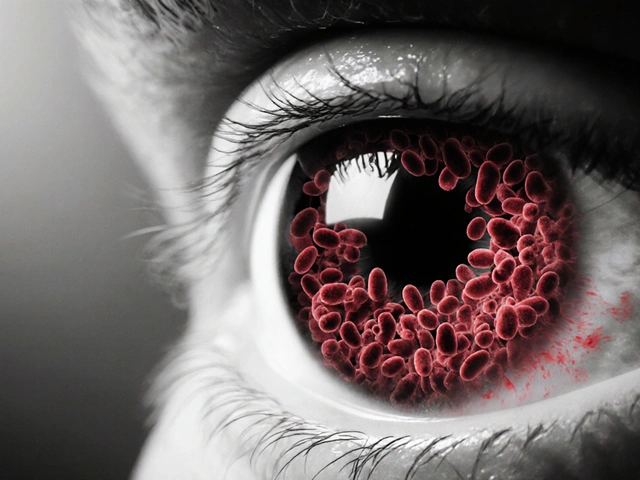Buspirone Appointment Preparation Checklist
Pre-Appointment Checklist
Prepare your doctor's appointment using this checklist to ensure you have all necessary information.
When you’re considering a new medication for anxiety, feeling nervous about the doctor’s office is normal. Buspirone is a non‑benzodiazepine anxiolytic approved for generalized anxiety disorder (GAD). Knowing what it does, its benefits, and how to discuss it can turn a tricky chat into a productive partnership.
Why the Conversation Matters
Doctors juggle dozens of patients daily, and medication decisions affect long‑term health. A clear, informed conversation helps you get the right dose, avoid unnecessary side‑effects, and build trust. When you’re prepared, the appointment stays on track and you’re less likely to leave with lingering doubts.
Do Your Homework Before the Appointment
- Write down the specific anxiety symptoms that bother you (e.g., racing thoughts, muscle tension, sleep trouble).
- Gather a list of every medication, supplement, and herbal product you currently take.
- Note any past experiences with anxiety meds - what helped, what didn’t.
- Read a reliable source about buspirone’s mechanism. For example, Buspirone works by modulating serotonin receptors rather than enhancing GABA like benzodiazepines.
Having this information ready shows you’re serious and gives the doctor a clear picture.
Understanding Buspirone Basics
Here’s a quick rundown of the most relevant facts:
- Classification: Buspirone belongs to the azapirone class of anxiolytics.
- Indication: Primarily prescribed for Generalized Anxiety Disorder, not for acute panic attacks.
- Onset of action: Usually 2-4 weeks before you notice a calming effect, which is slower than benzodiazepines but comparable to many SSRIs.
- Half‑life: Approximately 2-3 hours, meaning the drug clears quickly, but steady dosing maintains therapeutic levels.
- Typical dosage: Starts at 5 mg two to three times daily; doctors may titrate up to 30 mg per day based on response.
- Common side‑effects: Dizziness, headache, nausea, and occasional Adverse Effects like restlessness.
Knowing these points lets you ask precise questions rather than vague concerns.
Framing Your Concerns: Questions That Get Answers
- “What makes buspirone a good fit for my type of anxiety compared to other options?”
- “How long should I wait before I see improvement?”
- “Are there any interactions with the meds I’m already taking?”
- “What side‑effects should I monitor, and when should I call you?”
- “If buspirone doesn’t work, what’s the next step?”
These questions signal that you’ve done background research and are ready to collaborate.
Comparing Buspirone to Other Anxiety Medications
| Attribute | Buspirone | SSRIs (e.g., sertraline) | Benzodiazepines (e.g., lorazepam) |
|---|---|---|---|
| Primary mechanism | 5‑HT1A partial agonist | Selective serotonin reuptake inhibition | GABAA receptor potentiation |
| Onset of therapeutic effect | 2-4 weeks | 2-6 weeks | Minutes to hours |
| Risk of dependence | Low | Very low | High |
| Common side‑effects | Dizziness, nausea | Sexual dysfunction, GI upset | Sedation, memory problems |
| FDA status (2025) | Approved for GAD | Approved for depression & anxiety | Approved for short‑term anxiety |
Seeing the trade‑offs side‑by‑side helps you weigh what matters most-whether it’s low dependence risk, speed of relief, or side‑effect profile.

Handling Typical Doctor Responses
Doctors may push back for several reasons:
- “I’m not comfortable prescribing buspirone.” - Ask about their concerns. They might worry about insurance coverage or past patient experiences.
- “Let’s try an SSRI first.” - Explain why you prefer a non‑sedating option, especially if you’ve had trouble with SSRI side‑effects.
- “Your symptoms seem mild; lifestyle changes might suffice.” - Acknowledge the suggestion, but request a trial period to see if medication adds value.
Stay calm, repeat your main goals, and be ready to discuss a short trial period (e.g., 4-6 weeks) with clear criteria for success.
Follow‑Up and Monitoring
After you start buspirone, schedule a check‑in after 2-3 weeks. Bring notes on:
- Any new or worsening side‑effects.
- Changes in anxiety intensity (use a 1‑10 rating scale).
- How the medication fits with daily activities (work, sleep, exercise).
If the dosage needs adjustment, the doctor may increase by 5 mg increments every few days. Remember the Half‑life is short, so missing a dose can cause a brief dip in symptom control.
Quick Checklist for Your Visit
- Bring a written list of current meds and supplements.
- Describe specific anxiety triggers and frequency.
- Know the key facts about buspirone (mechanism, dosage, side‑effects).
- Ask the five prepared questions.
- Set a follow‑up date before leaving the office.
Having this checklist in hand keeps the conversation focused and shows you’re an active participant in your care.
Putting It All Together
Talking about buspirone doesn’t have to be intimidating. By doing a bit of research, writing down your symptoms, and framing clear questions, you give your doctor the information needed to make a safe, effective prescription decision. If the first try doesn’t work, the same collaborative approach will guide the next step.

Can I take buspirone if I’m already on an SSRI?
Yes, many doctors combine buspirone with an SSRI to target different pathways. However, they’ll monitor for increased serotonin‑related side‑effects like nausea or agitation.
How long does it take to feel the effects of buspirone?
Most people notice a reduction in anxiety after 2-4 weeks of consistent dosing. It’s slower than benzodiazepines but comparable to many antidepressants.
What are the most common side‑effects?
Dizziness, headache, nausea, and occasional restlessness. Serious reactions are rare but include severe allergic responses.
Can I stop buspirone abruptly?
Because buspirone has a short half‑life and low dependence risk, most doctors advise a gradual taper over 1-2 weeks to avoid rebound anxiety.
Is buspirone covered by Australian Medicare?
Medicare generally covers buspirone when prescribed for GAD, but you’ll need a PBS (Pharmaceutical Benefits Scheme) item to get a subsidy. Ask your pharmacist about eligibility.






Post A Comment